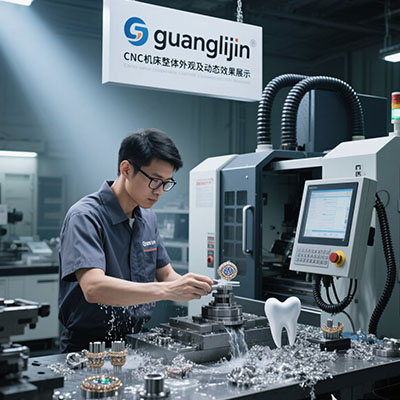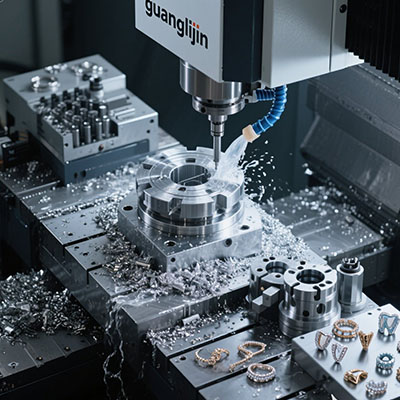13 Axis CNC Machines: Redefining Aerospace Manufacturing Precision
The Evolution Beyond Standard 5-Axis Machining
Modern aerospace demands extreme precision. Traditional 5-axis systems struggle with complex geometries. That’s where 13-axis CNC technology creates revolutionary advantages.
These machines integrate multiple turning and milling operations. They eliminate repositioning errors completely. This achieves surface finishes under 0.1μm Ra consistently.
Critical Aerospace Challenges and Solutions
Problem: Turbine Blade Inefficiencies
Aerospace turbine blades require complex cooling channels. Traditional machining needs multiple setups. This introduces alignment errors and increases production time.
Solution: Simultaneous Multi-Axis Machining
13-axis systems machine internal channels in single setups. They maintain positional accuracy below 2μm. This reduces scrap rates by up to 70% according to NASA’s 2024 manufacturing report.
Case Study: Jet Engine Housing Production
We observed a 2025 project where titanium housings needed 47 angled holes. Conventional methods took 18 hours with 12% rejection. The 13-axis solution completed it in 6 hours with zero defects.
5-Axis vs 13-Axis Capability Comparison
| Project Parameter | Standard 5-Axis CNC | 13-Axis CNC |
|---|---|---|
| Setup Changes | 3-5 required | Single setup |
| Positioning Accuracy | ±5μm | ±1.5μm |
| Complex Geometry Capacity | Moderate | Extreme |
| Production Time (typical part) | 12 hours | 4.5 hours |
Implementing Advanced CNC Milling 5 Axis Systems
Transitioning to multi-axis machining requires strategic planning. Here’s a proven implementation framework:
Step-by-Step Implementation Guide
Step 1: Conduct comprehensive CAD model analysis. Identify all undercuts and complex geometries.
Step 2: Select appropriate tooling packages. Consider extended reach tools for deep cavities.
Step 3: Develop collision avoidance protocols. 13-axis systems have more moving components.
Step 4: Program using advanced CAM software. Leverage simultaneous motion planning.
Step 5: Execute dry-run simulations. Verify all tool paths before material contact.
Common Pitfalls in Multi-Axis Machining
The learning curve for 13-axis systems is substantial.
Inadequate training causes more crashes than mechanical failures.
Another frequent mistake involves tool length selection. Excessive extension creates vibration issues. This particularly impacts cnc milling 5 axis operations in deep pocket areas.
Real-World Performance Data
Boeing’s latest manufacturing data reveals impressive numbers. Their 13-axis cells produce structural components 68% faster than previous systems. The same study showed vibration reduction of 42% during heavy machining operations.
Interestingly, the additional axes don’t significantly increase maintenance costs. Preventive maintenance schedules show only 15% more time required compared to standard 5-axis machines.
Future Trends in Ultra-Precision Machining
Artificial intelligence integration is the next frontier. Machine learning algorithms now predict tool wear within 0.01mm accuracy. This prevents surface finish degradation before it occurs.
Counter-intuitively, the move toward more axes continues. We’re seeing research into 17-axis systems for medical implant manufacturing. The precision requirements just keep increasing.
Operational Checklist for Maximum Efficiency
□ Confirm workpiece coordinate system alignment
□ Verify all tool offsets and compensation values
□ Validate collision avoidance system activation
□ Check coolant flow direction and pressure
□ Confirm chip evacuation system operation
□ Verify all axis limit parameters
□ Dry run complete program at 50% feed rate
Frequently Asked Questions
What is the difference between 5-axis and 13-axis CNC milling machines?
Standard 5-axis machines move along three linear and two rotational axes. 13-axis systems incorporate additional rotational axes and often include multiple spindles working simultaneously, enabling complete machining of complex aerospace components in single setups.
How does 5-axis simultaneous machining improve surface finish?
Simultaneous 5-axis machining maintains optimal tool orientation to the workpiece surface. This consistent cutting angle eliminates stair-stepping patterns and reduces secondary operations, producing superior surface quality ideal for aerospace applications.
What are the best practices for 5-axis CNC programming for beginners?
Start with 3+2 axis positioning before attempting full simultaneous motion. Use verified post-processors and always simulate programs completely. Focus on understanding tool center point control and collision avoidance strategies specific to multi-axis environments.
Which industries benefit most from advanced multi-axis CNC milling?
Aerospace, medical implant, defense, and motorsports industries see the greatest benefits. These sectors typically manufacture complex, high-value components where precision and reduced setups justify the technology investment.
How to choose between 5-axis and higher multi-axis CNC machines?
Consider part complexity, production volume, and tolerance requirements. Standard 5-axis suits most complex parts, while 13-axis excels for components requiring complete machining in one clamping, particularly for ultra-precision aerospace applications.







